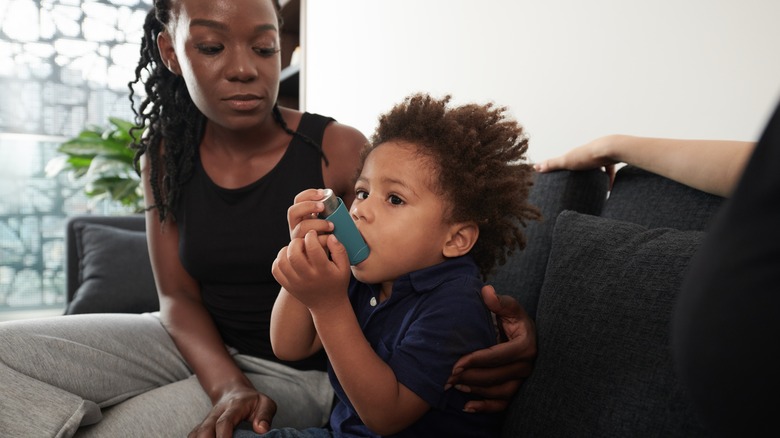New Research Suggests Neighborhood Factors Put Kids At A Higher Risk Of Asthma Complications
It's long been known that kids who live in inner cities are more at risk for developing asthma, and that those who do get it often get it worse (via Johns Hopkins). But a new study offers more insight into these findings, outlining factors that may be at play.
In the study, published online on July 25, 2022 in Pediatrics, researchers analyzed data from 15,492 children ages 2-17 living with asthma in Washington, D.C. from January 2018 to December 2019 (per American Academy of Pediatrics). They found that two factors contributed to increased asthma morbidity: increased violent crime and decreased educational attainment in the surrounding community. The increased asthma complications were determined by higher rates of asthma-related emergency room visits and hospitalizations in the area. Dr. Jordan Tyris, study author, explained that poor achievement in school is associated with lower health literacy, meaning that a person is less able to make informed decisions about their healthcare (via US News & World Report). She also explained that increased violent crime could be a factor due to the toxic stress associated with it.
How these factors might contribute to worsening asthma
However, researchers agreed that explanations for this data could be complex (via American Academy of Pediatrics). Dr. Kevin Fiori, director of social determinants of health and community and population health at New York's Montefiore Medical Center, said that these findings match what he sees in his practice (via U.S. News & World Report). According to Dr. Fiori, other factors that contribute to negative health outcomes include unstable housing and poor housing conditions, like mold or pests. He recommends that primary care providers partner with their patients to create interventions like advocating to landlords for suitable housing conditions and writing to local representatives about the impact of neighborhood safety on childhood health.
Study author Dr. Tyris emphasized to U.S. News & World Report that in order to lower asthma rates for kids in these neighborhoods, there need to be community-based interventions that engage community members and stakeholders. American Academy of Pediatrics also suggested that more research is needed on drivers of asthma morbidity like toxic stress, structural racism, and access to medical care.


